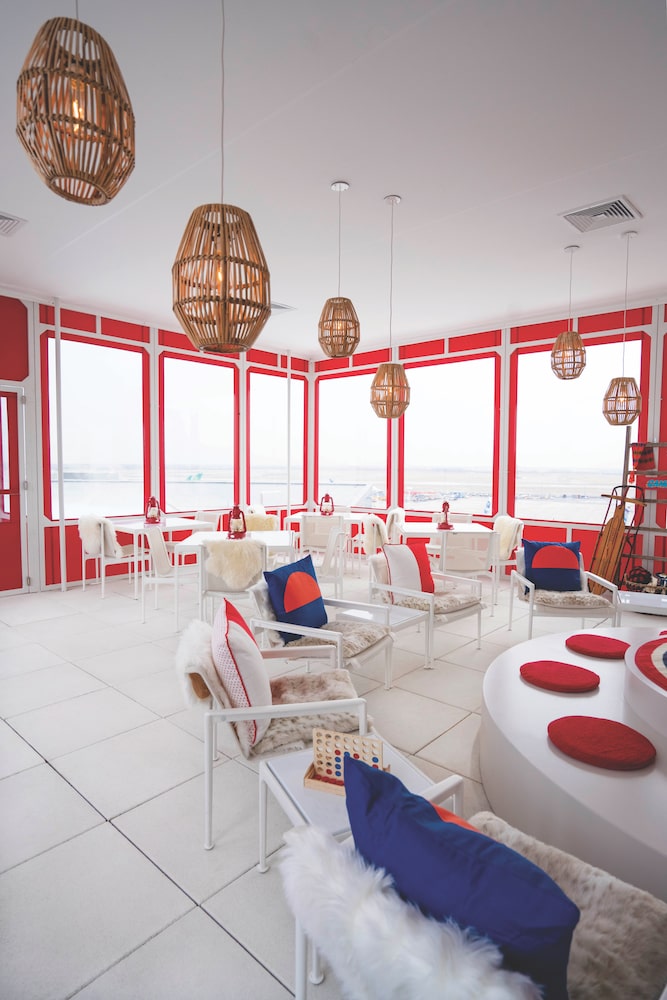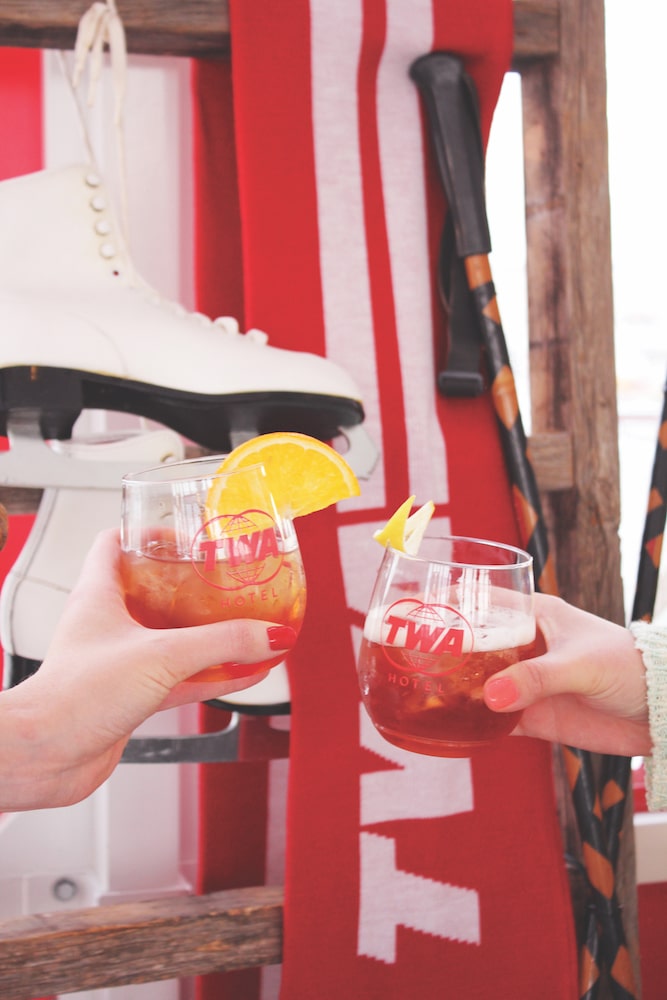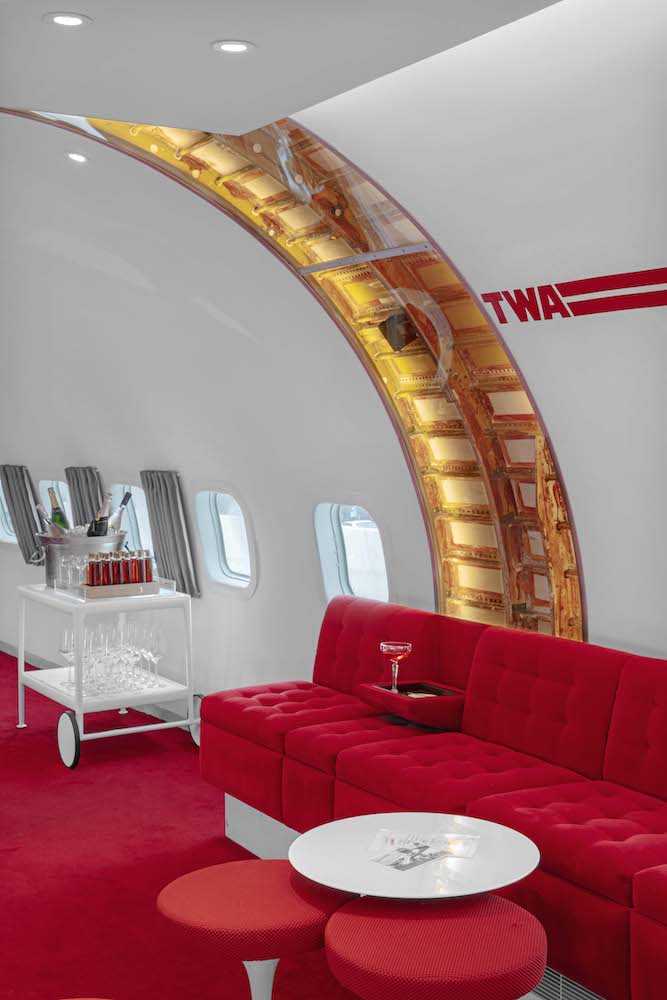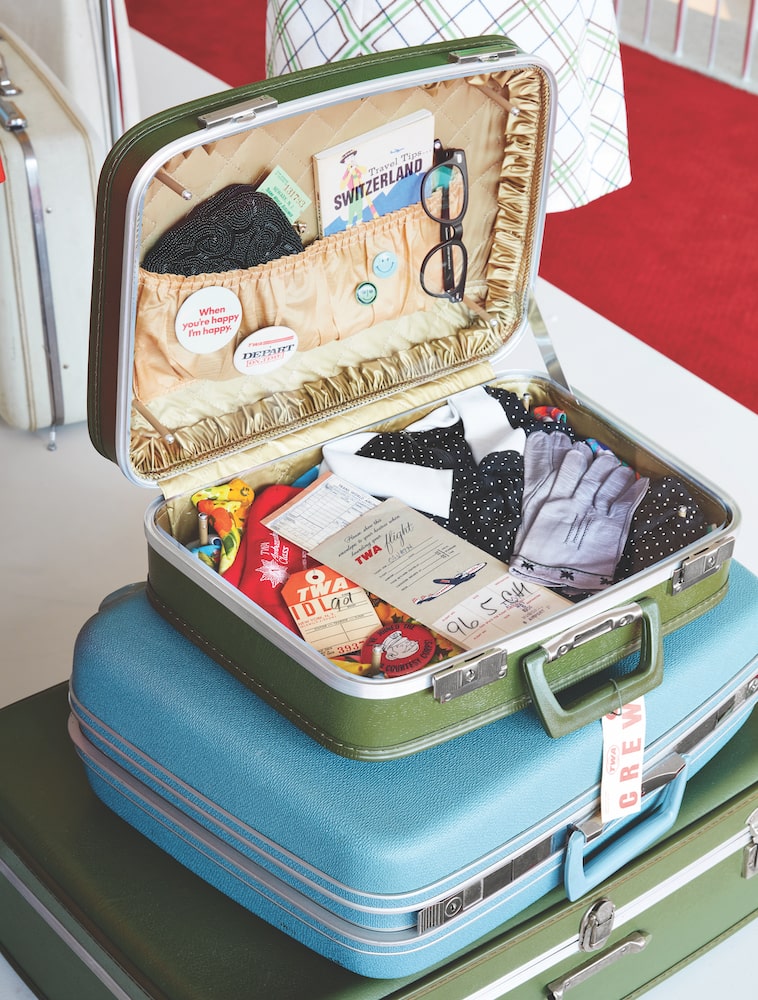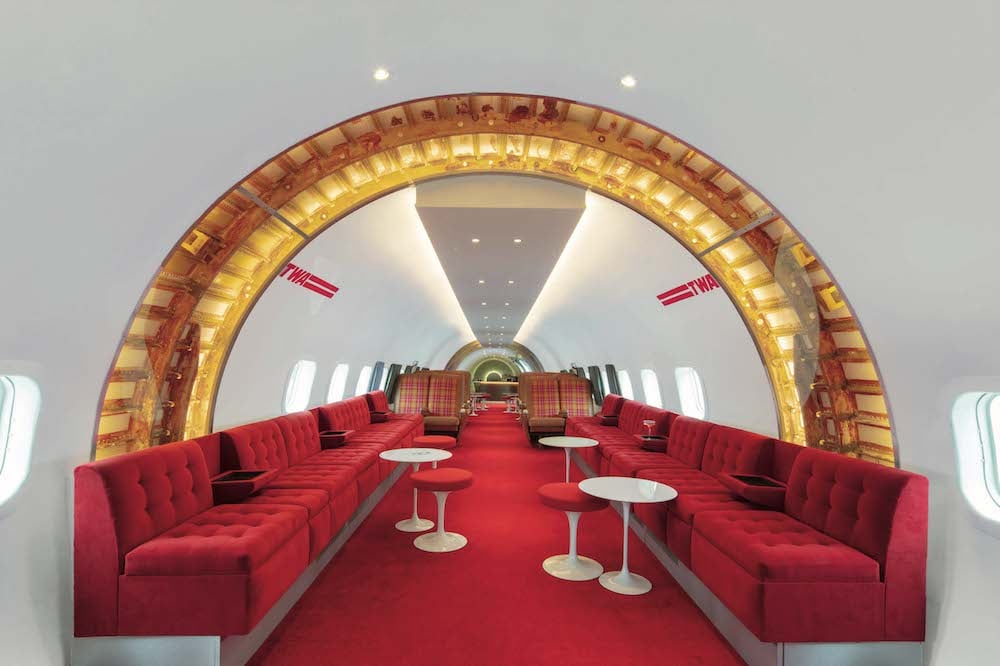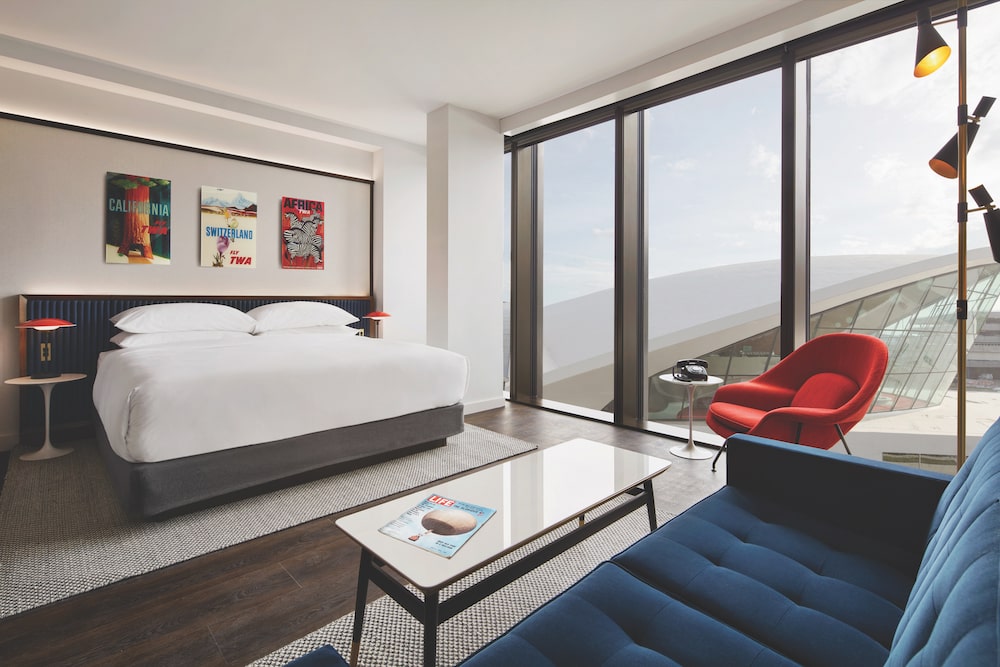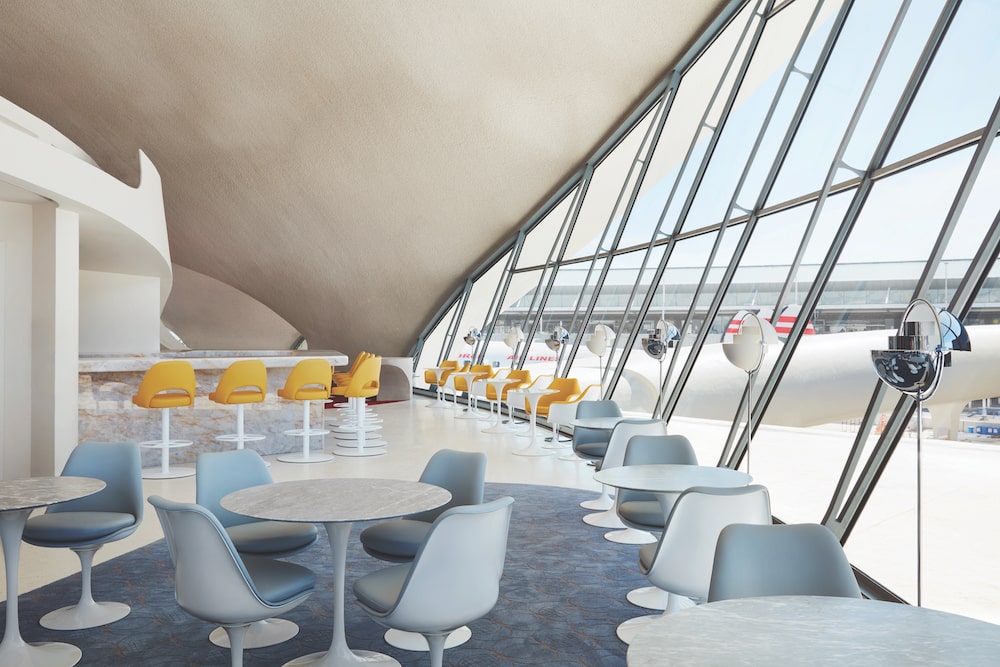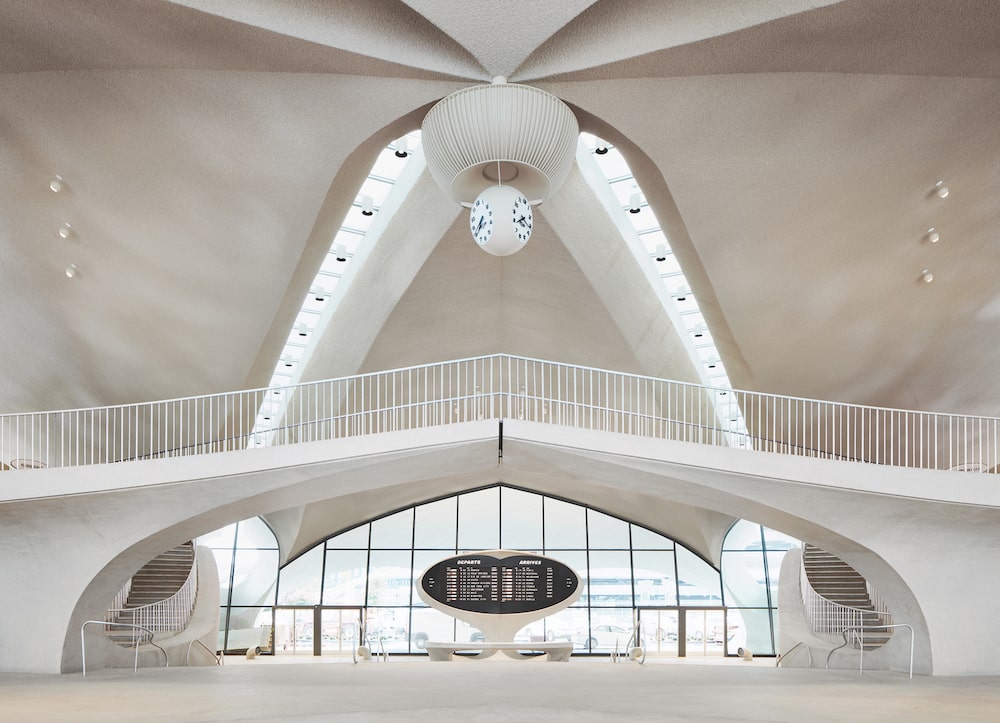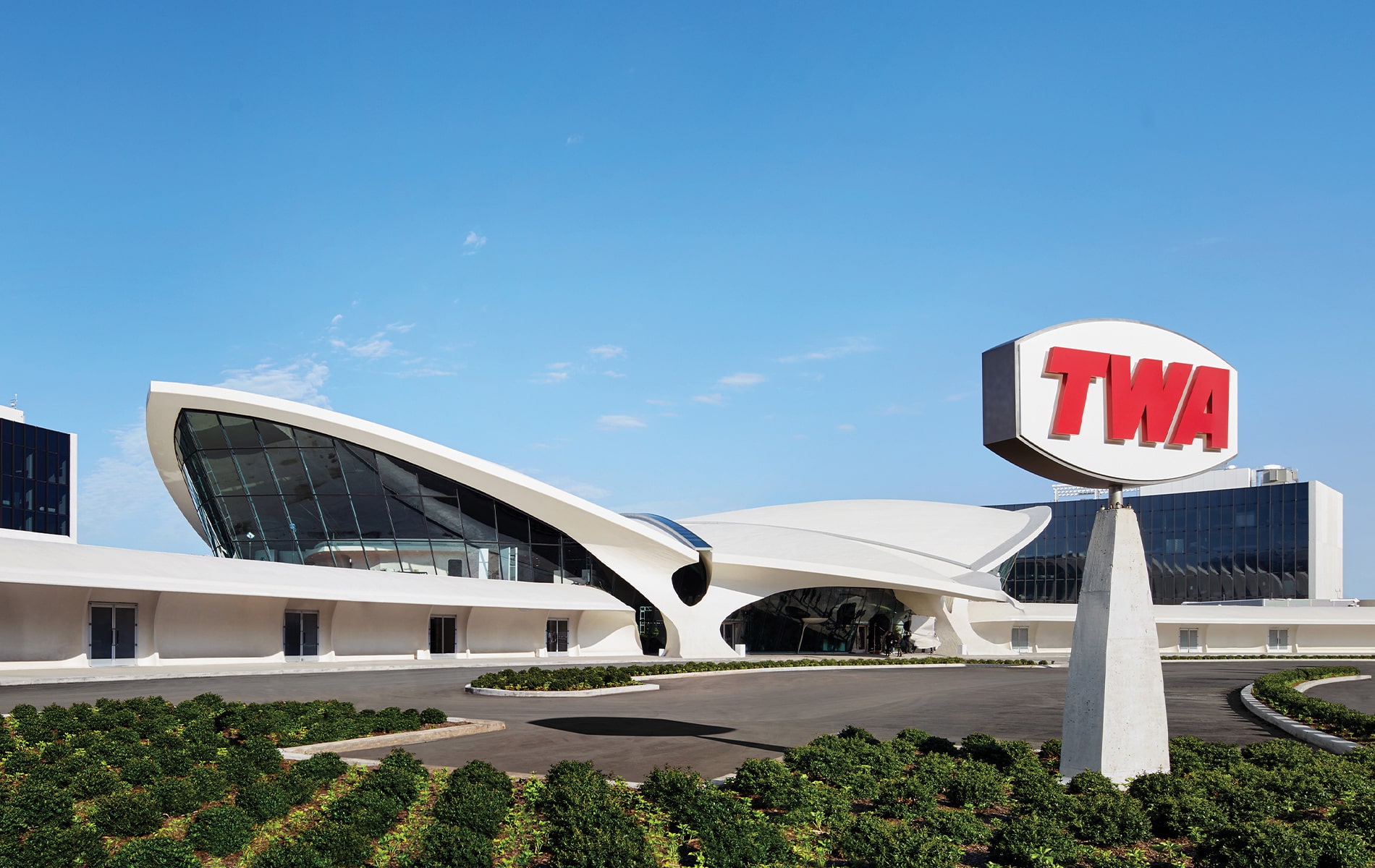
vie-magazine-twa-hotel-hero-min
TWA Hotel celebrates the architecture of Eero Saarinen’s TWA Flight Center in New York while adding modern amenities guests will appreciate today.
TWA Hotel Celebrates the Golden Age of Air Travel
By Anthea Gerrie | Photography courtesy of TWA Hotel
In a sunken passenger lounge sumptuously carpeted in Benjamin Moore’s Chili Pepper red, sipping a whiskey sour below a bespoke, vintage Solari departures board designed in Italy, I’m waiting in style for Frank Sinatra to fly me to the moon.
But although I’m partying like it’s 1962 in Eero Saarinen’s TWA Flight Center, which opened that year, I am an arrival rather than a departure in the new iteration of this iconic building, now meticulously transformed from an airline terminal into a multi-award-winning hotel like no other airport hostelry.
With its soaring modernist curves, rooms overlooking the runway, and a Constellation parked outside offering a quirky alternative cocktail lounge that has won its own awards, the TWA Hotel is one of New York City’s newest attractions rather than a mere layover perch. It’s a time capsule to which fans of mid-century living flock to immerse themselves in an era when air travel was less stressful and a glamorous event to dress up for, like a visit to the theater.
There are differences, of course. The planes that taxi beneath my bedroom window bear the livery of JetBlue, which burst into existence just as TWA went through its millennium death throes after more than seventy years of service. The airline emerged too soon to take over the terminal, which closed in December 2001. Still, JetBlue passengers on layover are among the most regular users of the hotel, which offers four-hour daytime and overnight stays.
There are differences, of course. The planes that taxi beneath my bedroom window bear the livery of JetBlue, which burst into existence just as TWA went through its millennium death throes after more than seventy years of service. The airline emerged too soon to take over the terminal, which closed in December 2001. Still, JetBlue passengers on layover are among the most regular users of the hotel, which offers four-hour daytime and overnight stays.
Preserving this architectural jewel by adding 512 hotel rooms and a whole slew of exhibits celebrating the 1960s lifestyle set to a mid-century soundtrack—everything from doo-wop to bossa nova—is a labor of love that deservedly won an AIA architecture prize for the challenging transformation.
“The iconic Chili Pepper red carpet was a key part of the TWA Flight Center’s original design, and we preserved it,” says Chris Betz, guest experience director at the TWA Hotel. “In the early ’60s, no one could have imagined rolling luggage over it!” Guests must navigate a fair stretch of the carpet to the guest wings via the long, white-walled flight tubes that once led to TWA planes. But the slight drag is worth it to tread those iconic ramps, which have since played starring roles in the film Catch Me If You Can and Amazon Prime’s hit series The Marvelous Mrs. Maisel.
Many check into rooms like my own—small and functional, as most guests stay only one night. But a floor-to-ceiling runway view provides the wow factor. And there’s no lack of elegance in the design execution, as a few distinctive features of guest rooms include ribbed wood paneling hand-finished by Amish artisans, angled desk lamps that field a 1960s vibe, and cut-glass ice buckets atop the mini-fridge. Amenities include souvenirs every guest must surely pocket with relish: tiny bottles of TWA-branded body lotion and a stack of logo-adorned pencils.
“The iconic Chili Pepper red carpet was a key part of the TWA Flight Center’s original design, and we preserved it.”
That iconic logo has been licensed for use throughout the hotel, beautifully reproduced in brass on the base of elevators. These lead to guest rooms and a delightful new addition: a rooftop with a heated outdoor pool that offers a dramatic vantage point from which to view the planes. The adjacent restaurant converts seasonally to a winter chalet serving hot toddies and other festive après-ski fare.
The central dining spot is not original, but the Paris Café by Jean-Georges looks as it surely would have done sixty years ago had Saarinen thought to install pre-flight catering on a mezzanine platform. There are booths in dove gray, blush pink, and primrose yellow and dozens of Saarinen’s iconic tulip chairs, not to mention a long curving counter and yet another cocktail lounge. The main libation-dispensing spots are two elegant circular bars in the upper lobby above the semicircular lounge where TWA passengers awaited their departure beneath that iconic board. Its mirror image Solari board click-clacks real-time destination updates at the hotel entrance.
As for those museum exhibits, the most engaging is the show of six decades of TWA crew uniforms by top designers of the times, including Jackie Kennedy’s favorite, Oleg Cassini, Pierre Balmain, Ralph Lauren, and the less well-remembered Dalton, who dressed flight attendants in the bright colors and miniskirts beloved in the sixties. More challenging to find, unless you seek them out, are the 1962 living room faithfully recreated at the back of the flight tubes and a replica of Eero Saarinen’s design studio. Here, I learned the Finnish-born architect, who also designed the St. Louis Arch, first sketched his concept for the terminal on the back of a dinner napkin. Since he created it during an era of smaller planes, the terminal was almost obsolete at the time of opening in terms of how many passengers it could handle, a fact nearly as tragic as the fact Saarinen died a year before the opening of his masterwork, considered one of the most outstanding examples of mid-century modern design in the world.
The New York City Landmarks Preservation Commission declared the terminal a landmark in 1995, and the Port Authority cemented its preservation by building a new JetBlue terminal behind it to shelter it in place. This set the scene for the hotel transformation. Beyer Blinder Belle Architects restored the original Flight Center, and female-led Lubrano Ciavarra worked magic on the two hotel wings with interior designers from Stonehill Taylor. Beneath the lobby, INC Architecture & Design made new subterranean conference and event spaces sing with period finishes in a ballroom, which was formerly a baggage hall, and in more back-in-the-day exhibits only delegates and wedding guests usually get to see. (For example, the paper flight attendant uniforms, which barely survived a single dinner service!)
My visit to JFK’s only on-site hotel, where astonishingly, considering the entertainment quotient, rooms start at only $250 ($159 for a four-hour stay), was a delightful place to recover from my transatlantic flight. The only disappointment was the food (the cocktails were perfectly constructed, as you would expect). Burgers and fries were nothing special, and there were no fine dining options, so good almonds and olives brought over to me from Connie, the cocktail bar in the Constellation, were the best things I ate during my stay. Avocado toast had made it onto a breakfast menu that was otherwise a throwback, including the horrible hotel coffee I’m sorry to say I remember from early visits to the USA before the espresso takeover. But given that the TWA Hotel is essentially a period piece, I couldn’t help wondering if the weak coffee was an intentional reminder that staying here is essentially an invitation back to the future.
— V —
Visit TWAHotel.com to learn more or book your stay.
Writer Anthea Gerrie flew to JFK with Norse Atlantic Airways, the new low-cost airline linking Miami, Los Angeles, New York, and Orlando with London, Paris, Oslo, and Berlin. Visit FlyNorse.com to check flights.
Share This Story!
KEEP UP WITH THE LATEST STORIES FROM VIE



